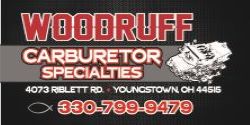Currently in the process of tapping and moving the IFRs. I need to go get a drill for the emulsion blanks so I figured I’d ask this question while I was not working.
Do the IFRs need to be flush with the port they’re going into or can the head of the screw stick up slightly? In this case, it’s not sticking up higher than the gasket and it does allow the block to sit flush in the main body.
I still need to remove the old IFRs, go figure my mini flathead doesn’t have a thick enough head so I need to buy one of those too lol.


Do the IFRs need to be flush with the port they’re going into or can the head of the screw stick up slightly? In this case, it’s not sticking up higher than the gasket and it does allow the block to sit flush in the main body.
I still need to remove the old IFRs, go figure my mini flathead doesn’t have a thick enough head so I need to buy one of those too lol.
















